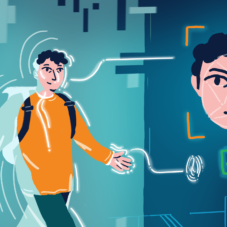How Tech Companies Are Quietly Becoming the World’s Most Influential Architects
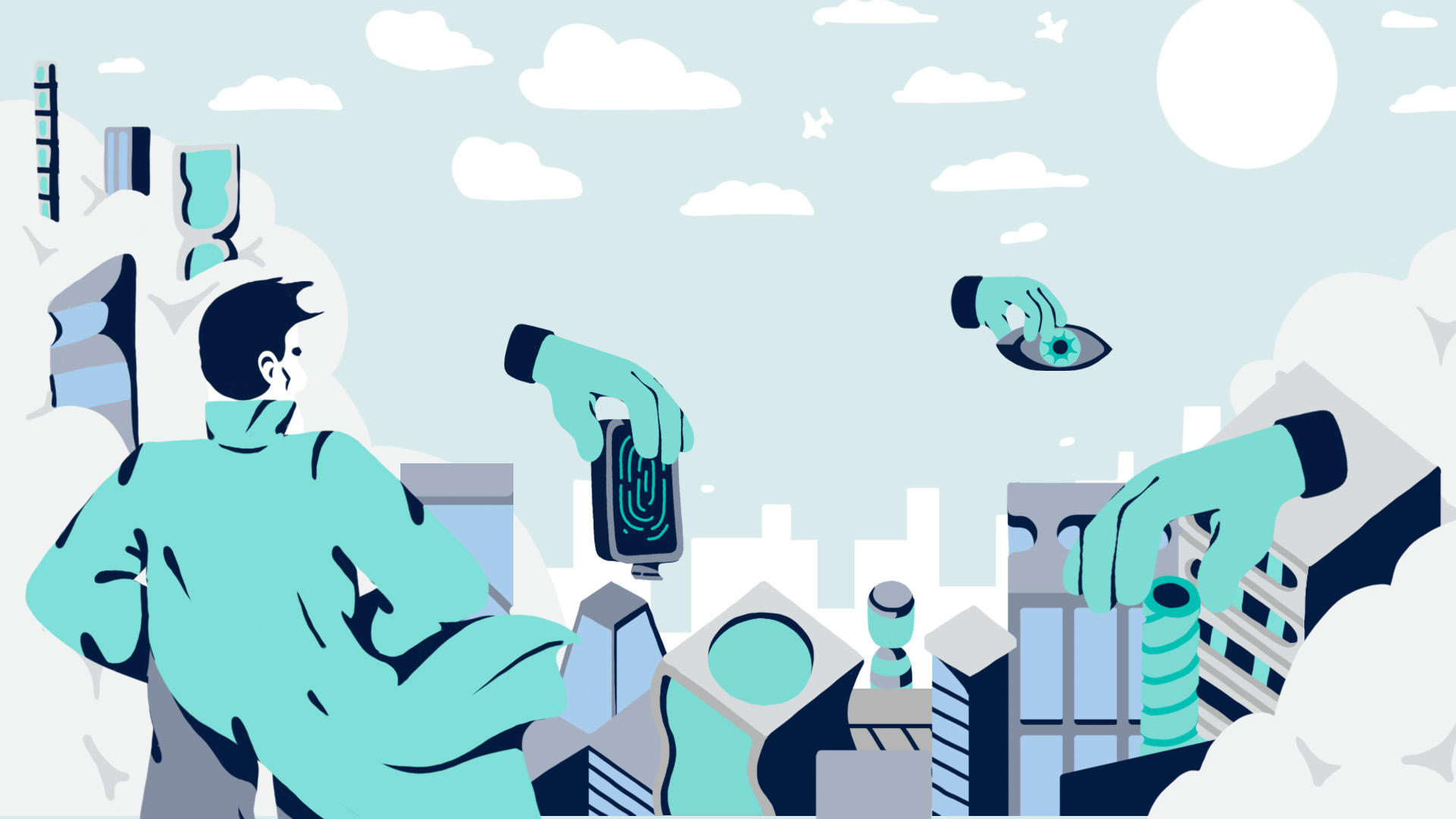
The most influential architects in the world don’t stamp drawings; they ship product roadmaps. The result is a blueprint that developers price into value, designers test in living labs, and communities feel at street level.
Tech companies have started treating office space as another product to innovate. Instead of simply renting buildings, they’re crafting futuristic workplaces tailor-made to their needs. What they’re doing, in essence, is writing the playbook for the modern office.
Trends like biometric security or AI-powered climate control, which originate from Google, Apple, or emerging innovators, eventually become standard features everywhere. The fusion of biometric tech and IoT devices is already creating work areas that are more secure, intelligent, and frictionless.
The shift in office design doesn’t just affect tech giants. It’s influencing architects, real estate developers, employees, and even how our cities evolve.
Breaking Away from Traditional Offices
Tech firms are abandoning old-school office setups for good reasons. Today’s employees, especially younger generations, expect a seamless environment. Gen Z has grown up digital, and as they enter the workforce, the concept of return to the office takes on a whole new meaning. Many are accustomed to flexible, remote work and virtual collaboration, so companies must create an engaging office experience to entice them. This means the old maze of cubicles and dull lobbies won’t cut it.
One major motive is security, specifically the push for zero-trust physical security. In this model, no one is assumed to have clear access by default. Every door or zone continuously verifies identity, often via biometrics, and analyzes real-time data for threats. Most traditional offices weren’t built for this level of integrated security. Until recently, getting into work meant flashing an ID badge at the lobby or inputting PIN codes. But now, a face or fingerprint scan can instantly unlock doors while ensuring accurate identity verification. It’s something far more secure and convenient than a plastic keycard.
“One major motive is security, specifically the push for zero-trust physical security. In this model, no one is assumed to have clear access by default. Every door or zone continuously verifies identity, often via biometrics, and analyzes real-time data for threats.”
Modern offices are app-driven. Before employees even arrive, they can see which teammates are in and reserve a desk via their phone. Upon walking in, wireless access systems recognize them. Turnstiles open automatically, elevators anticipate their floor, and even ordering lunch or booking a gym slot is done on one platform. These conveniences make a high-tech office feel more worthwhile. Not an obligation.
Now cue in a traditional office with a lonely reception desk and a sign-in sheet. That now feels like a relic and is a poor lure for top talent. It’s telling that companies like Apple poured $5 billion into building Apple Park, its own custom campus, to create a futuristic work environment that also functions as a powerful recruitment tool. Tech firms are leaving dated offices because they can do better. That means more security, more wow-factor, and more appeal to the next generation of innovators.
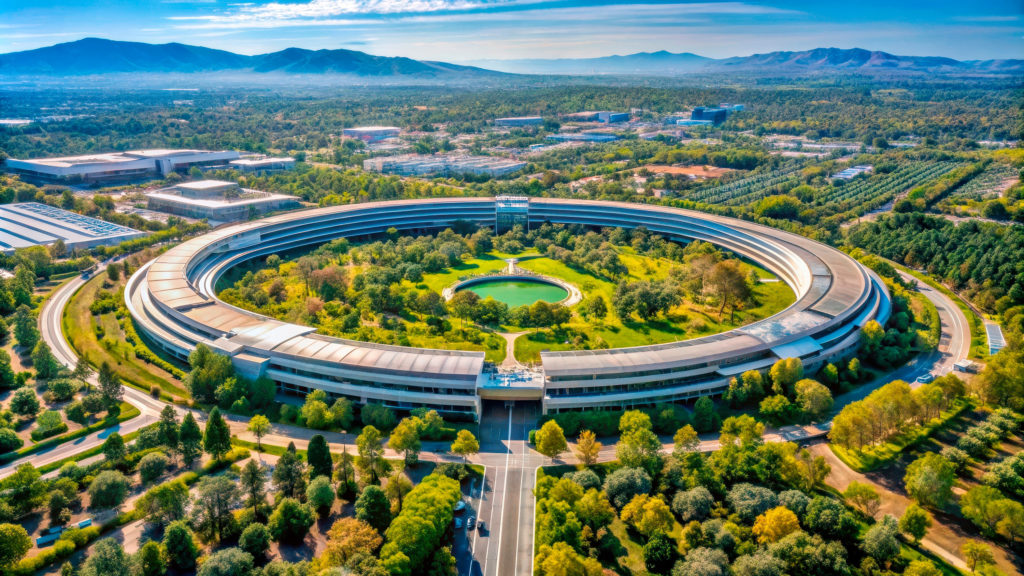
A New Blueprint for Developers, Architects, and Communities
Technology companies are no longer just occupants of buildings as they’re now reshaping the rules that guide how they’re conceived, built, and lived in. Their influence now extends across three fronts: developers and property owners, architects and designers, and employees and surrounding communities. It’s a new era with more inclusive design for accessibility, more green spaces and pedestrian-friendly planning, and workplaces that don’t shut themselves off at 5 PM but instead become part of the urban experience.
· Developers & Owners
For developers, the definition of real estate value has shifted. It’s no longer just about static square meters or headcount capacity. It’s about how adaptable and intelligent that space can be. For example, when Google planned its Bay View campus, the company pursued an extremely flexible design that could evolve over time. The result is a campus under tent-like canopies with modular components and open floorplates, ready to morph as needs change.
The message to developers is clear – a property’s long-term value lies in its functional flexibility. A building that can be reconfigured on the fly is now seen as far more valuable than one locked into a single use.
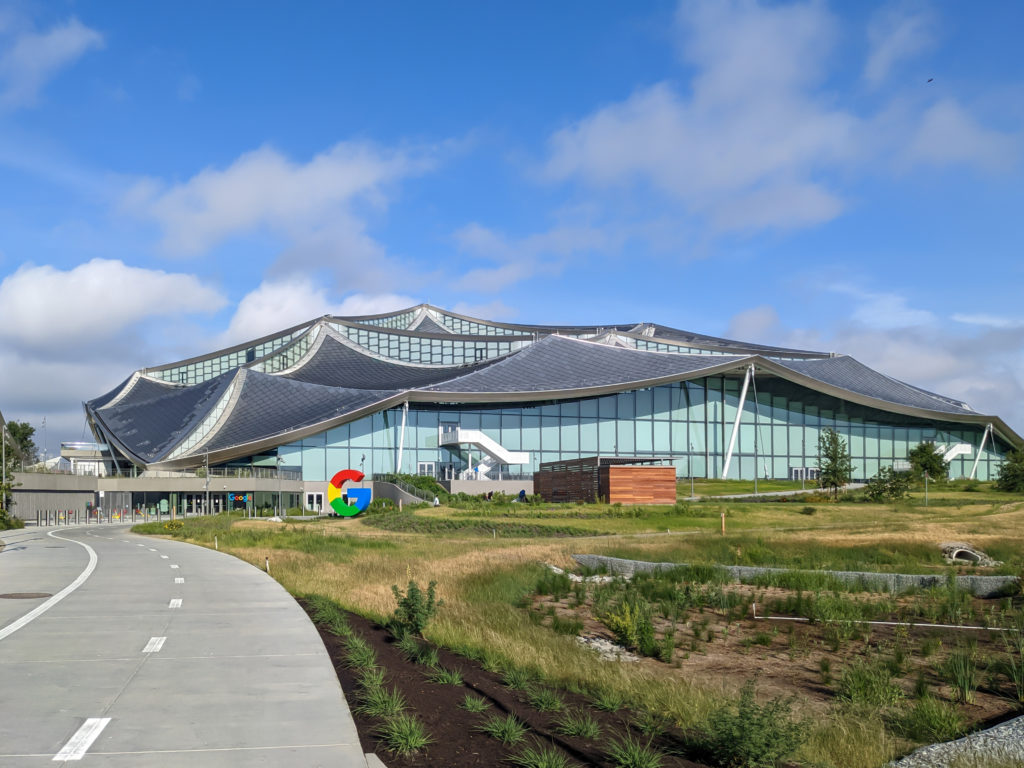
Owners are investing more and more in digital infrastructure, treating data networks and sensor grids as core assets rather than afterthoughts. A fully wired, AI-enabled building can command a premium, because it promises to remain state-of-the-art for years. In practice, this means fiber-optic backbones, 5G antennas, IoT sensors in ceilings and floors – all the invisible circuitry that turns a static structure into a responsive environment. Developers now talk about future-proofing in the same breath as location or floor count.
“The message to developers is clear – a property’s long-term value lies in its functional flexibility. A building that can be reconfigured on the fly is now seen as far more valuable than one locked into a single use.”
If a building’s bones (its frame and layout) are flexible and its brains (its digital systems) are smart, it is positioned to keep pace with technology and work patterns well into the future. This combination transforms a static building into a responsive one, making flexibility a long-term asset.
Studios Designing the Future of Work
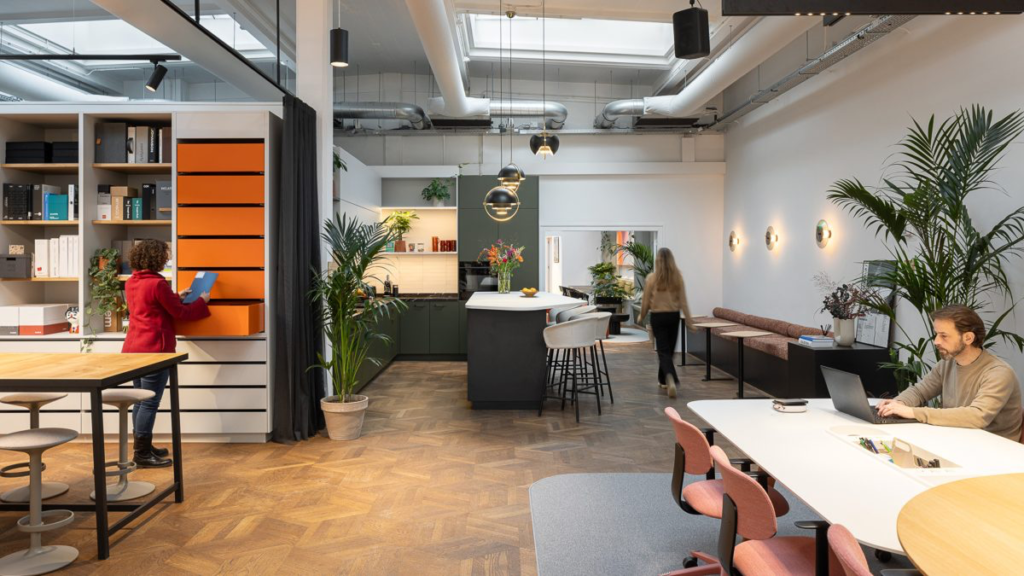
M Moser Associates — M Moser Amsterdam Studio (Living Lab) is a smart-building retrofit targeting net zero, with WELL building standard – Platinum accreditation and a cloud-based digital twin using live sensors to tune energy, air quality, and space use.
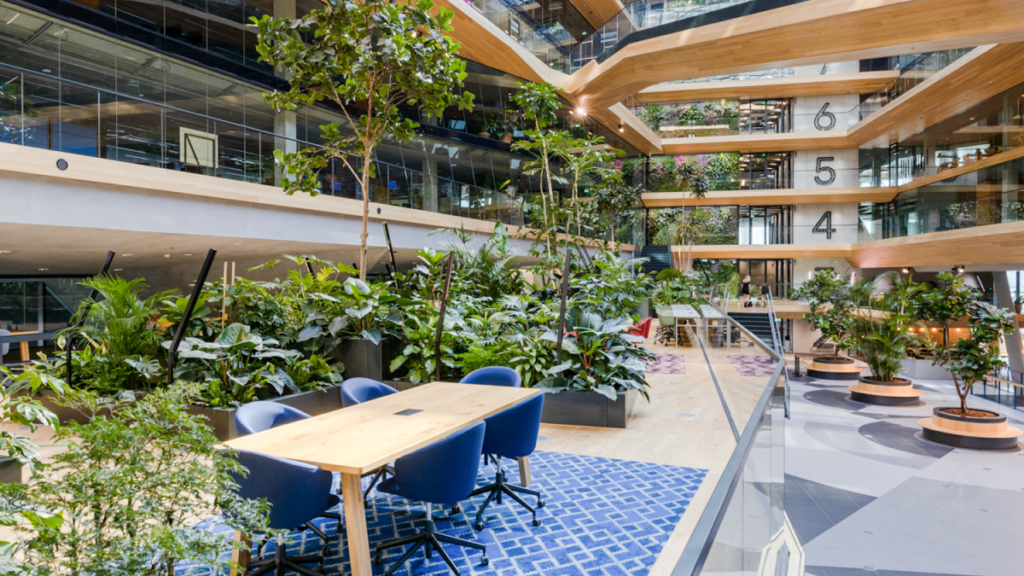
Foster + Partners — JPMorgan Chase HQ, 270 Park Avenue is New York city’s largest all-electric tower, designed for net-zero operational emissions and built with 97% of demolition materials recycled or re-used.
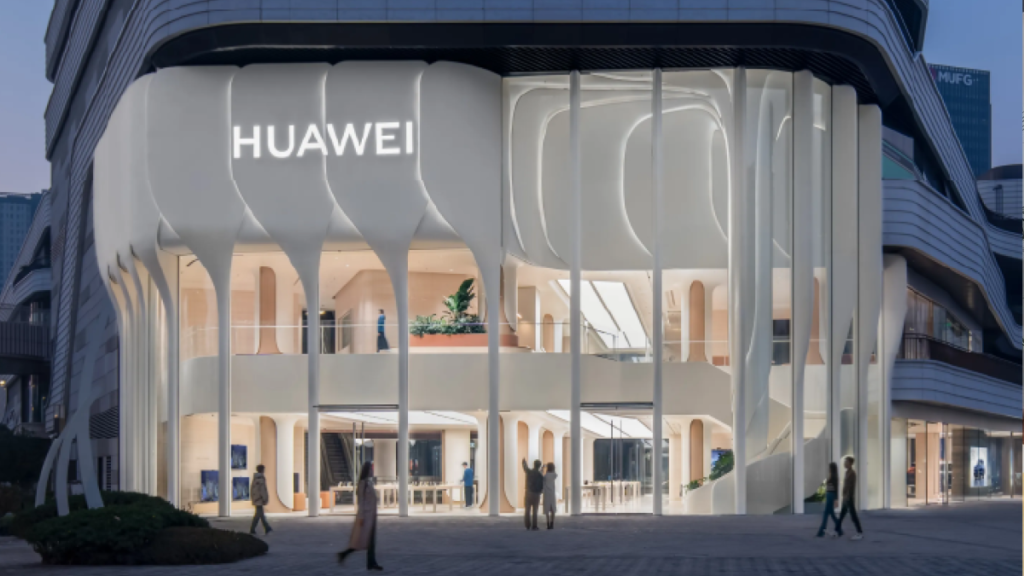
UNStudio — Huawei Taikoo Li Flagship Store in Shanghai is an immersive “living forest” flagship whose petal-like, biophilic facade and interior blend technology, nature, and community to create a civic gateway to the district.
· Architects & Designers
For architects, tech companies have introduced a product mindset: design, test, refine. Workplace design is starting to look less like a one-off construction project and more like an ongoing software update. M Moser Associates, a global design firm, has turned many of its own studios into living labs. In these constantly tweaked environments, walls are demountable, layouts are fluid, and sensors feed a stream of information back to the designers. One M Moser lab might trial a new AI-driven lighting system or an acoustic pod one week, then reconfigure the next, embracing a mixture of exploration and curiosity as standard practice.
“Workplace design is starting to look less like a one-off construction project and more like an ongoing software update.”
Even architecture giants are adopting this agile approach. Foster + Partners, known for landmark headquarters, now emphasizes flexibility and tech integration in their projects from the ground up. The firm’s design for JPMorgan Chase’s new 60-story New York headquarters touts 21st-century infrastructure, smart technology, and 2.5 million square feet of flexible and collaborative space expressly created to easily adapt to the future of work.
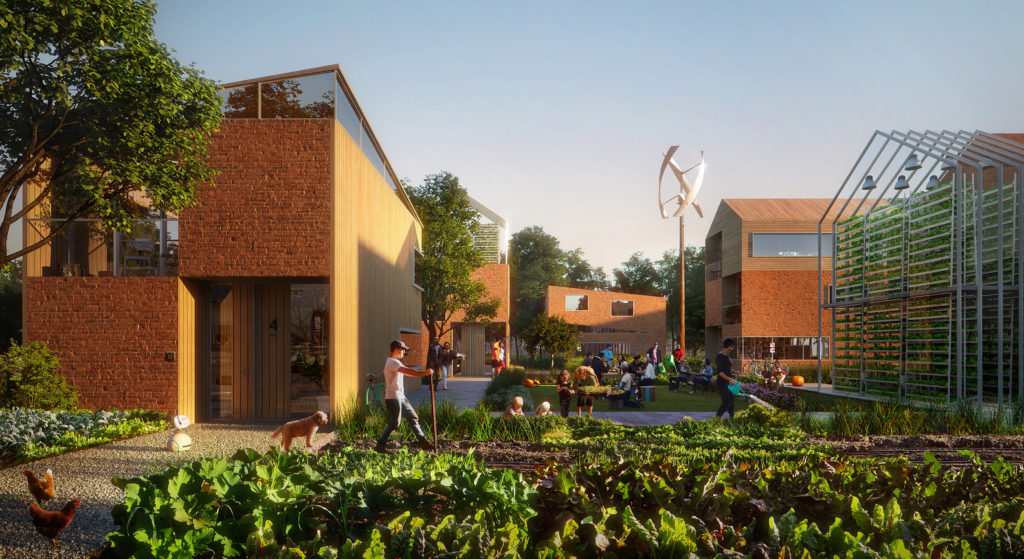
Another top firm, UNStudio, has gone so far as to create an in-house tech startup, UNSense, to inject sensor technology and data analytics into its designs. Their projects range from a ‘smartest neighborhood’ test-bed in the Netherlands centered on a living lab to high-tech office towers in Asia that blur the line between building and digital platform.
· Employees & Communities
For employees and communities, tech campuses are becoming engines of urban change. Take Singapore. The city-state’s one-north district was conceived as a high-tech hub interwoven with urban life. It’s the first fully integrated work-live-play-learn hub for R&D industries. It’s essentially a mini city where labs and offices sit alongside apartments, parks and retail, all connected by mass transit. This blueprint has made one-north a magnet for talent. It exemplifies how governments and developers now collaborate to shape entire neighborhoods around innovation driven by the tech industry.
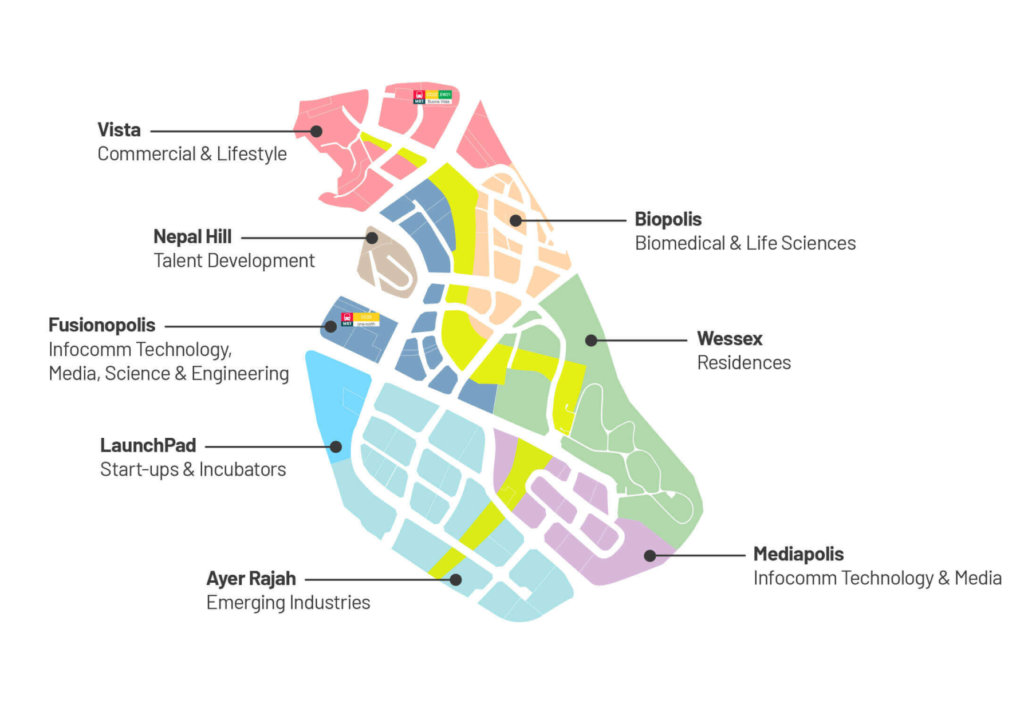
Stockholm’s Kista Science City shows the long arc of this influence: once an industrial park, it is now Europe’s largest ICT cluster. This sprawling complex is home to over 1,000 tech companies and 25,000 workers, plus a university presence and shopping center. City planners extended transit lines to Kista. Now, they are adding housing and amenities to turn it into a balanced urban district, not just a 9-to-5 office park.
The high-tech workplace has become a nucleus for urban regeneration, but it also brings new responsibilities. Cities like Stockholm have had to address the imbalance when a flourishing tech hub doesn’t initially benefit its immediate residents, prompting initiatives to improve local housing, education and inclusivity alongside the shiny offices.
The Personalized Office
Tech firms see their buildings not just as containers for work, but as platforms for innovation. In this vision, a building comes with its own operating system and can be programmed much like a gadget or app. We already see steps in this direction. Some advanced offices run on unified digital platforms that link lighting, climate, access control, and more.
“Personalization is a hallmark of this future workspace. The same technologies used for security, such as biometric ID and IoT sensors, are being harnessed to tailor the environment to each individual. It’s a level of custom experience we’re used to online (think recommended content or saved settings), finally manifesting in physical space.”
Ülemiste City in Tallinn, Estonia, the largest business campus in the Baltics covering 78,000 m² of space, is introducing an AI-driven management system across all its office buildings to run climate control and energy usage intelligently. This unified digital platform continuously analyzes real-time data to achieve the desired indoor climate at minimal cost. The result is a smart campus where heating, cooling, and ventilation automatically adjust based on occupancy and need, much like an operating system managing resources for optimal performance.
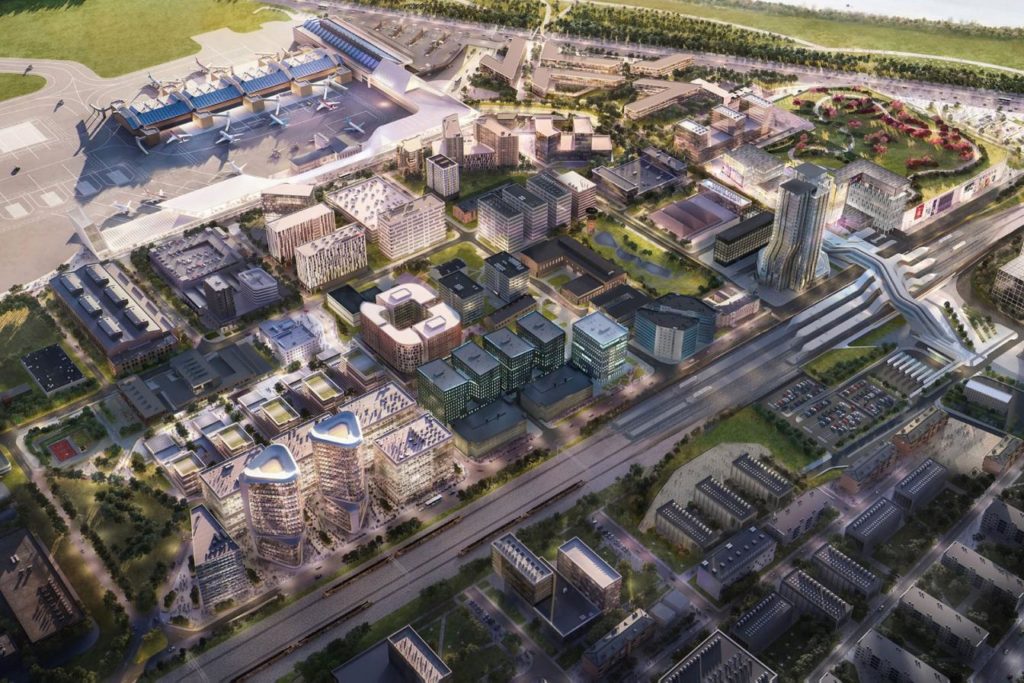
Personalization is a hallmark of this future workspace. The same technologies used for security, such as biometric ID and IoT sensors, are being harnessed to tailor the environment to each individual. It’s a level of custom experience we’re used to online (think recommended content or saved settings), finally manifesting in physical space. And crucially, it all happens while maintaining security and privacy by design, since the same systems making life convenient are also making sure you are really you.
Spaces now flex around function, not fixed roles
Another defining trait of tomorrow’s office is flexibility of purpose. With remote and hybrid work now common, people come into the office more deliberately and less routinely. Spaces therefore are being designed for purpose-driven presence. For instance, large rooms with movable walls can shift from open collaboration zones to private breakout spaces. Lounges can also be set up for casual brainstorming rather than rows of fixed desks. The office is where you gather your team for a creative sprint, meet clients, or access specialized equipment. It’s no longer just a place to sit and type.
We can already see glimmers of this future in experimental workplaces around the world. And it’s not just tech companies or designers experimenting here. Even a bank or pharma company might refit its headquarters to pilot new workplace tech before rolling it out system-wide. It can try a new idea and measure how it affects productivity or happiness.
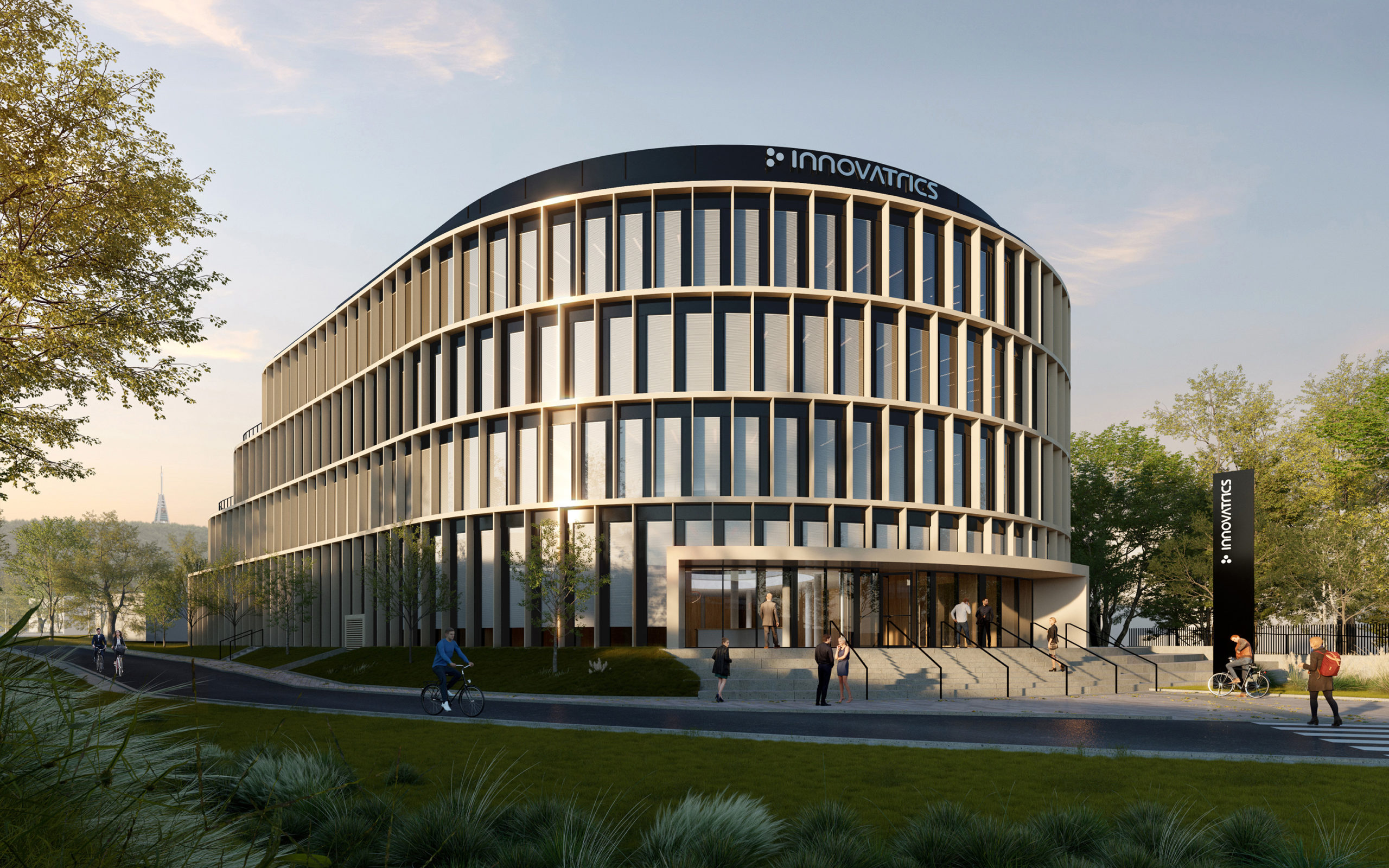
Innovatrics HQ at a glance
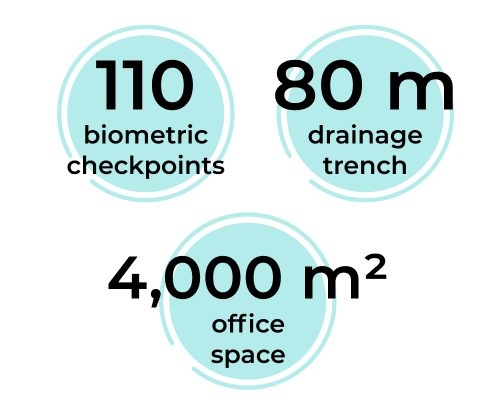
Touch-free entry from turnstiles to offices with 110 biometric checkpoints
On-site water cycle with an 80-m drainage trench and a dedicated well
4,000 m² across four floors with terraces, a bistro, and wellness areas
A workplace where every interaction feeds innovation
One striking example is unfolding in Bratislava, Slovakia. Innovatrics, a biometrics technology firm, is building its new headquarters set to open in 2026, which aims to be the most biometric building in the world. The HQ will double as a showroom for the company’s own facial recognition and digital identity solutions. It’s a place where every employee, client, or visitor experiences the pinnacle of biometric access control in a real-life setting.
Upon entering the HQ, the parking garage gate will automatically open for recognized employees without a keycard, and lobby turnstiles will verify your face instead of requiring an ID badge. Innovatrics is weaving in its full suite of biometric tech so that every door and elevator can authenticate you without keys or cards. Even the visitor experience will be high-tech as guests can pre-enroll their identity before arrival, meaning a quick face scan at the entrance is all it takes to let them inside.
“We imagine a workplace where even your desk is dynamic, assigned not by habit but by what you’re working on that day. The building itself adapts to your projects, your team, and your agenda.”
– Jan Lunter, Innovatrics Founder and CEO
By designing their office as a full-scale demo, the company can test user experience, iron out kinks, and showcase their tech all at once. It’s the ultimate dogfooding.
In these spaces, designers measure how layouts impact behavior and tweak things in response. “We imagine a workplace where even your desk is dynamic, assigned not by habit but by what you’re working on that day. The building itself adapts to your projects, your team, and your agenda,” says Innovatrics Founder and CEO Jan Lunter of this approach. This blending of design and data yields offices that are flexible, connected, and constantly learning.
Not Just Built by Developers, But by Developers
When offices serve as both a workplace and R&D lab, innovation feeds on itself. Employees play an active role in shaping and improving their work environments. New technologies mature faster when they live in a setting just down the hall from the engineers who built them.
It’s easy to see a future where any large office, not just a select few, is routinely updated like an app, with beta features rolling out to a subset of floors, A/B testing of different layouts or tools, and constant integration of user feedback. Buildings won’t (and can’t) remain static because work itself isn’t static. As one era’s must-haves like cubicles or corded phones give way to the next, the companies that treat their offices as evolving platforms will adapt the quickest.
The bottom line? The next generation of buildings won’t just be constructed by traditional real estate developers. They’ll be co-created by software-minded innovators. In embracing that idea, they’re proving that a building is no longer just real estate, but an infrastructure for innovation. The companies getting this right aren’t just rethinking the office, they’re turning it into a platform. And in that shift, the workplace stops being an obligation and starts becoming an upgrade.
AUTHOR: Mark Quiazon
ILLUSTRATION: Matej Mihályi






